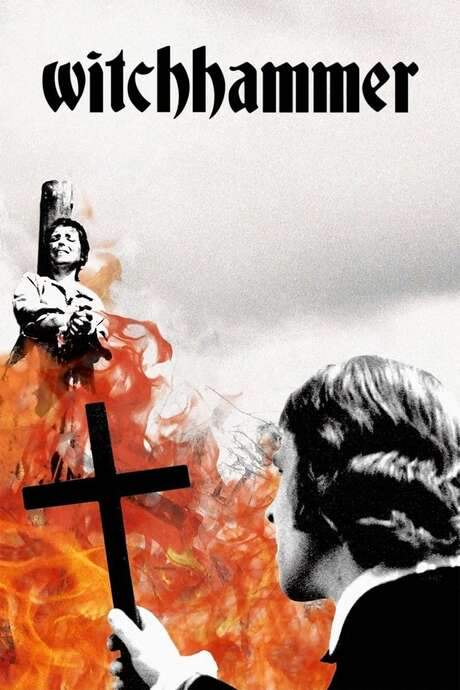
Witchhammer
Year: 1970
Runtime: 107 mins
Language: Czech
Director: Otakar Vávra
In the 1600s a fanatical clergy drives a wave of witch‑hunts, arresting women and dragging them before inquisitorial tribunals where they are forced to confess to fictitious sorcery. The film shows how brutal torture and relentless persecution are used, and anyone who dares to defend the accused is branded a heretic themselves.
Warning: spoilers below!
Haven’t seen Witchhammer yet? This summary contains major spoilers. Bookmark the page, watch the movie, and come back for the full breakdown. If you're ready, scroll on and relive the story!
Witchhammer (1970) – Full Plot Summary & Ending Explained
Read the complete plot breakdown of Witchhammer (1970), including all key story events, major twists, and the ending explained in detail. Discover what really happened—and what it all means.
In the 1670s Moravia, an altar boy notices an old woman hiding the bread given out during communion. He quickly alerts the priest, who confronts the woman. She admits that she took the bread with the intent to give it to a cow to re-enable its milk production. The priest reports the incident to the owner of the local estate, who then calls in an inquisitor, Boblig von Edelstadt. With a strict reliance on the medieval manual Malleus Maleficarum, he launches an ever-escalating series of trials. The tribunal wields thumbscrews in its interrogations, presenting torture as a sanctioned tool of justice, even as such harsh methods draw scrutiny.
Amid the escalating crackdown, a priest, Kryštof Lautner, speaks out against the inhumane procedures, and another clergyman senses that many of the accused women may be innocent, praying for the heavy-handed trials to stop. Boblig’s power begins to feel precarious as fear and zeal mix in the courtroom.
Boblig comes to fear Lautner, and one of the accused testifies against Lautner and his cook, Zuzana. Lautner is pressured about having a cook and about playing the violin—two acts deemed unconventional for a clergyman. He explains that his late mother took Zuzana in, and that he kept her because the girl had nowhere else to go. The drama widens as Lautner’s friends, the Sattlers, who own property slated for confiscation by the tribunal, are forced to confess that they accompanied Lautner and Zuzana to Peter’s Rock, engaged in fornication and worshiping Lucifer. Under torture, Zuzana is driven to insanity and confesses.
Lautner denies that his friends are telling the truth, while admitting that he himself took Zuzana’s virginity. The tribunal ultimately weighs the volume of confessions against his declared innocence, and the 36 confessions prevail. In the end, Boblig’s confidence swells as he proclaims that he has risen above all ordinary men, solidifying his grip on power and the course of the proceedings. The tale unfolds with a grim reminder of how fear, religion, and authority can intertwine to crush dissent and blur the line between justice and vengeance.
Last Updated: October 09, 2025 at 11:23
Unlock the Full Story of Witchhammer
Don't stop at just watching — explore Witchhammer in full detail. From the complete plot summary and scene-by-scene timeline to character breakdowns, thematic analysis, and a deep dive into the ending — every page helps you truly understand what Witchhammer is all about. Plus, discover what's next after the movie.
Witchhammer Timeline
Track the full timeline of Witchhammer with every major event arranged chronologically. Perfect for decoding non-linear storytelling, flashbacks, or parallel narratives with a clear scene-by-scene breakdown.



